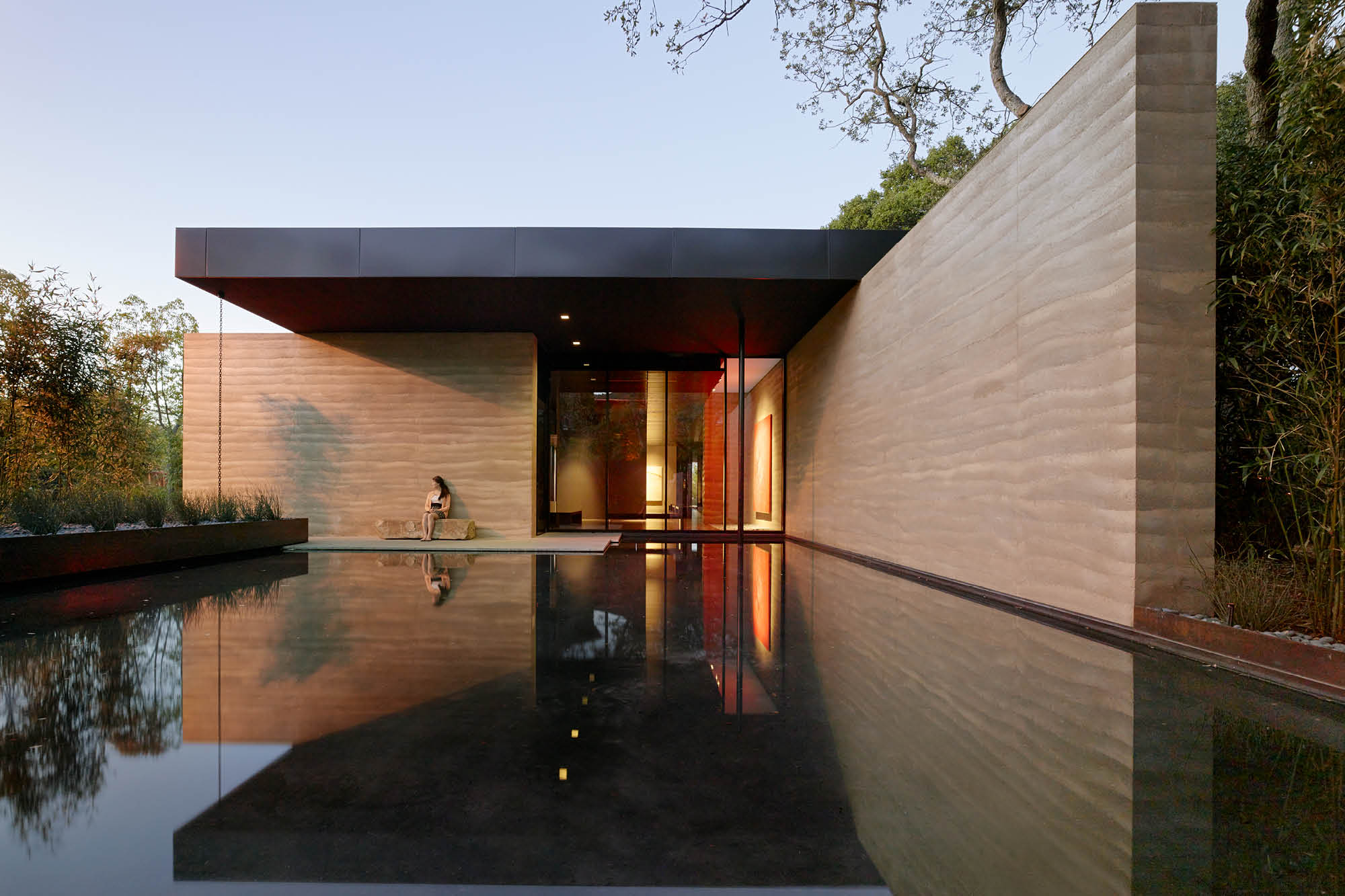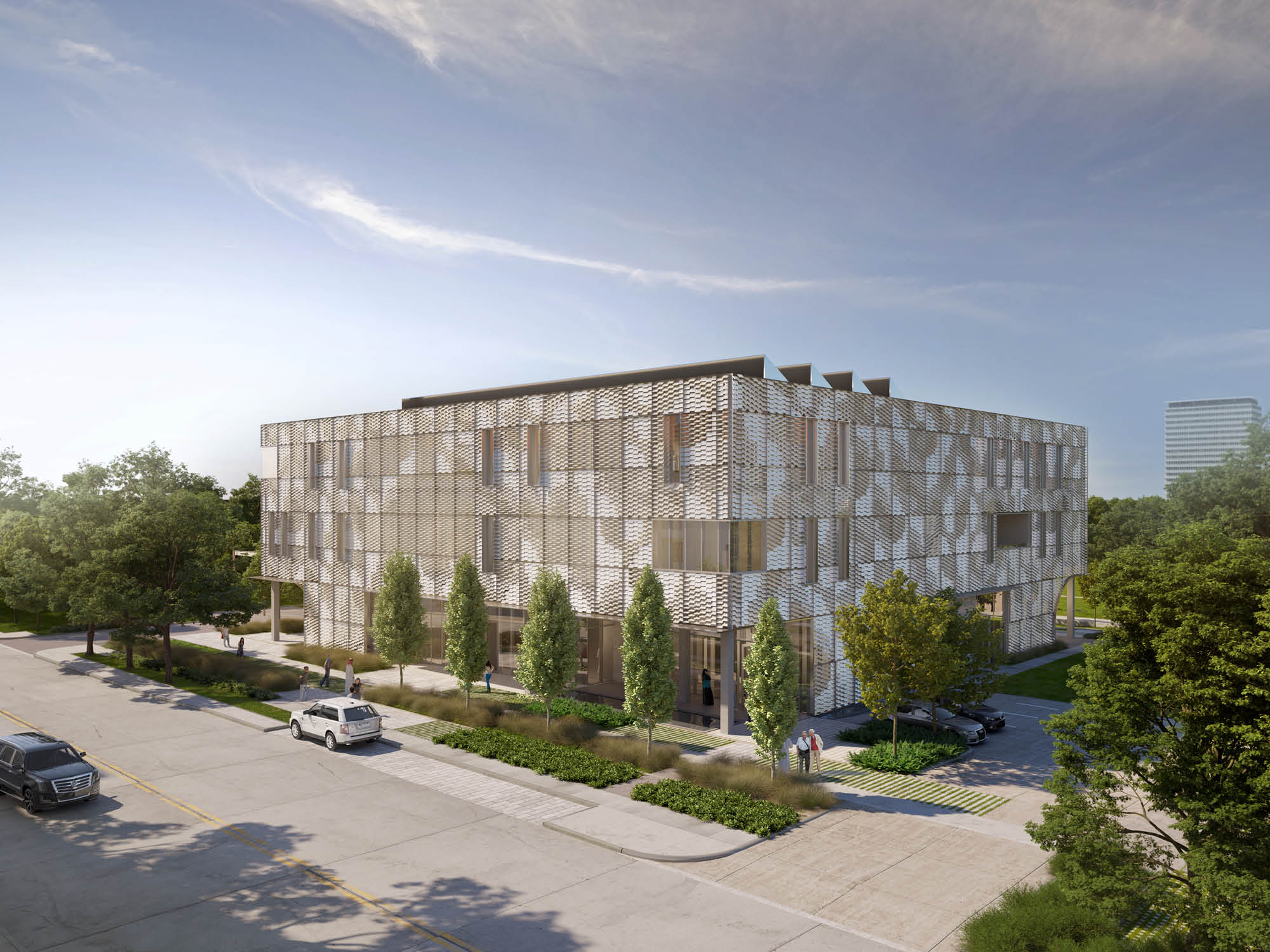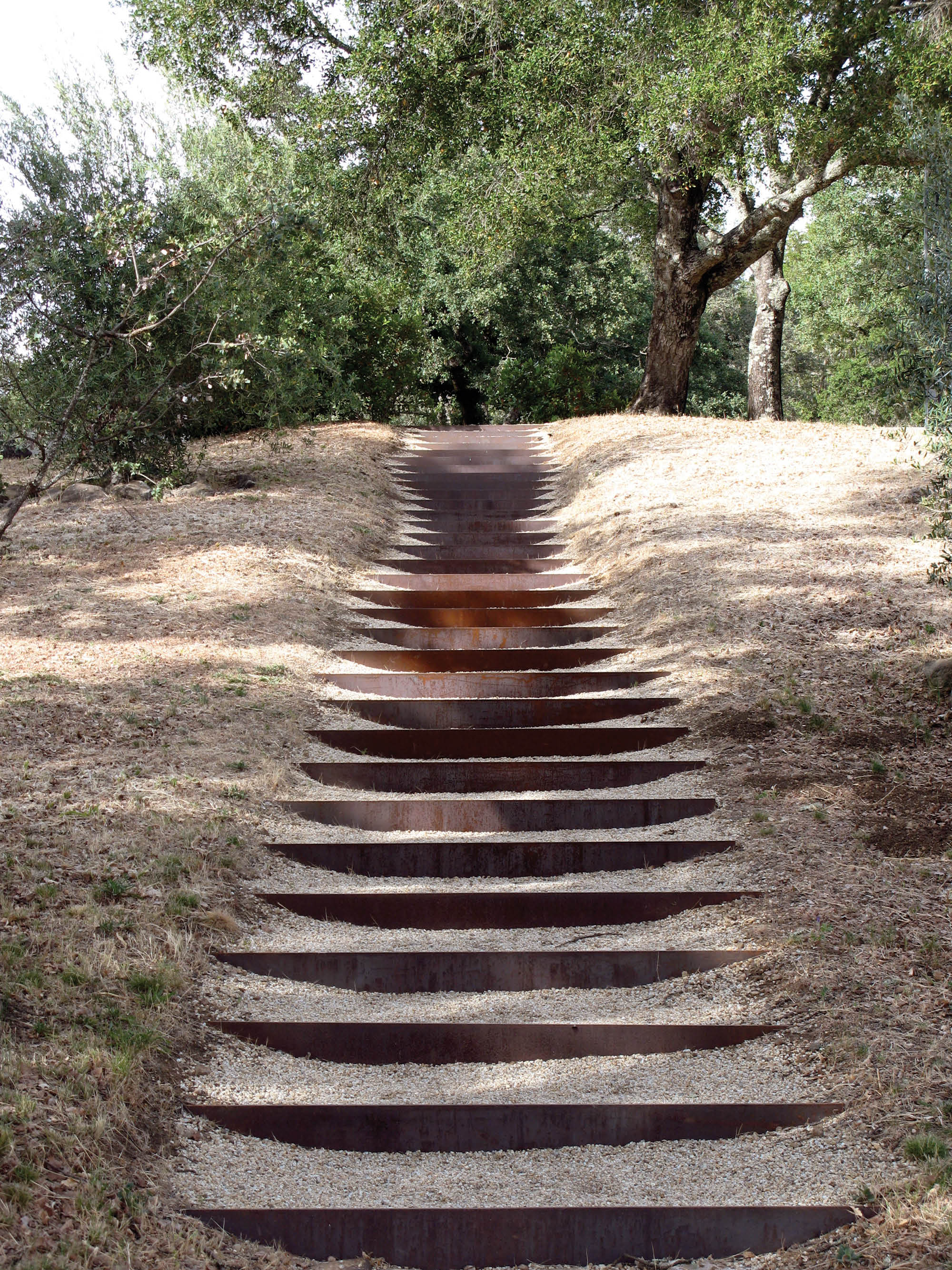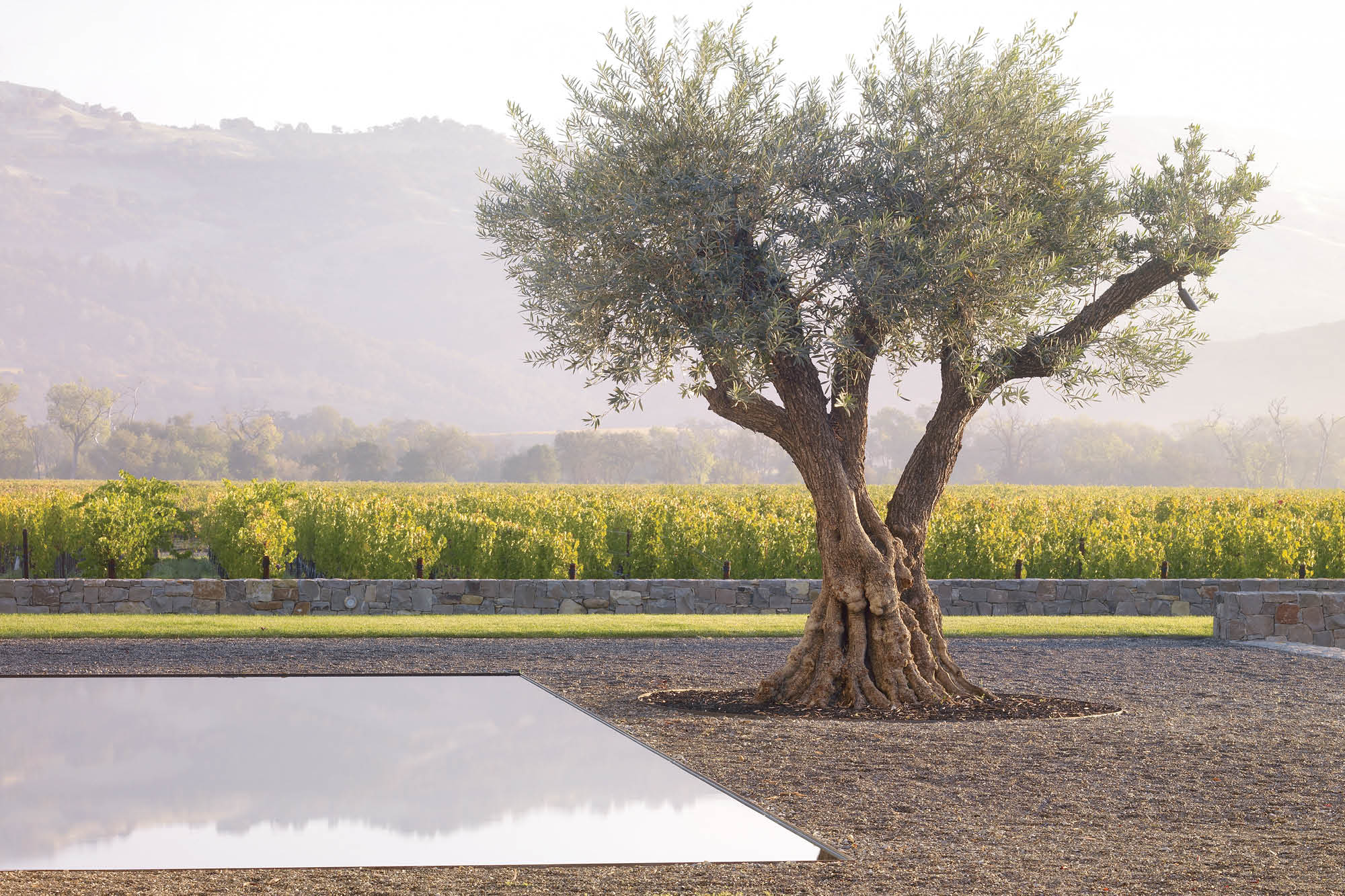
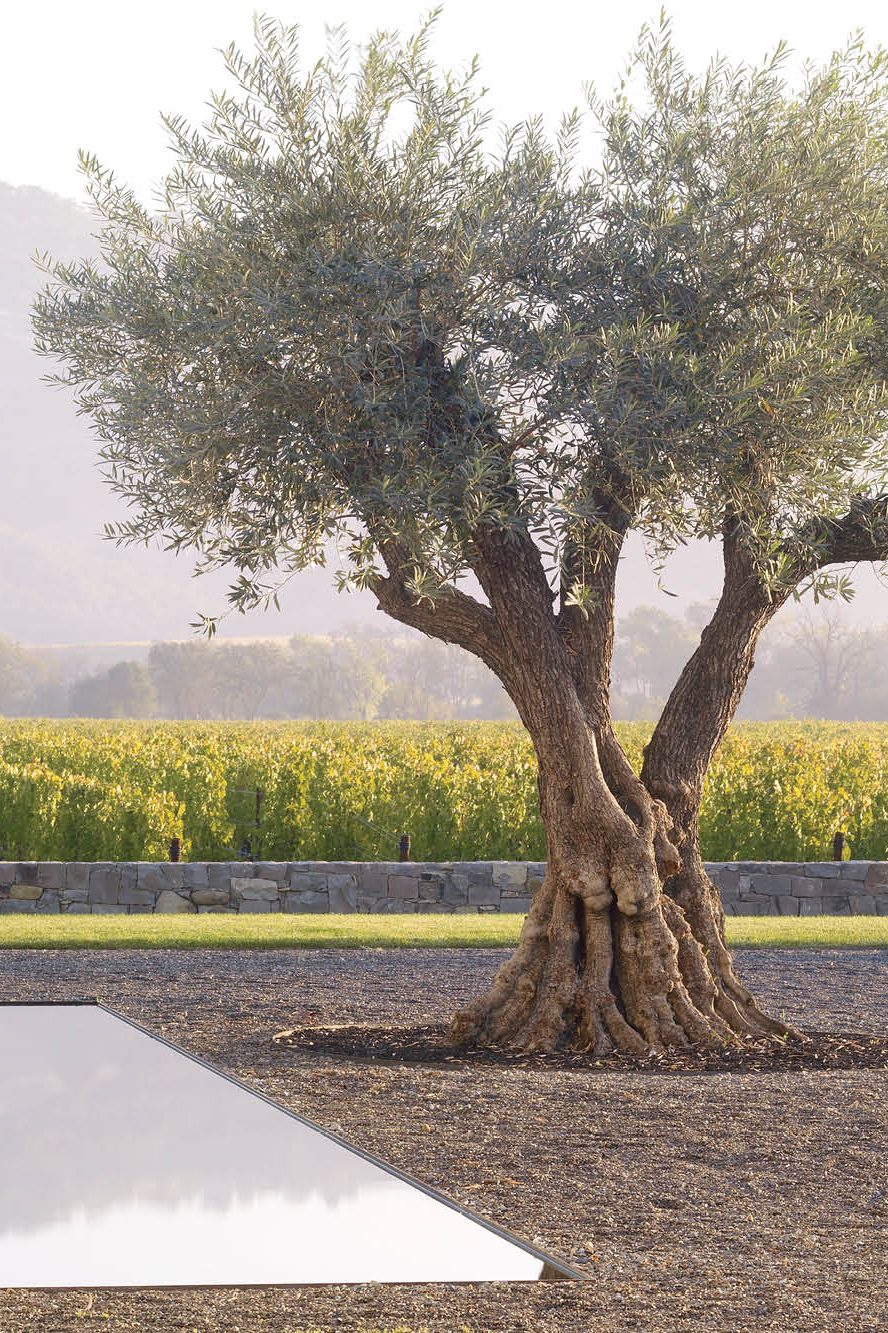
Walden Studios
Walden Studios is designed as a mixed-use facility with arts-related offices, artist studios and leased commercial space. The site design integrates a working vineyard and its agricultural buildings with the arts facility. The project is sited in the flood plain of the Russian River, with deep, rich soil ideally suited for agriculture.

Although now a prime wine-growing region, historically the area was known for growing hops and prune plums, and this property originally served as a prune-packing plant. The design intention was to draw on the memory of the orchards that once filled the valley in order to create a palpable link with its agricultural past.
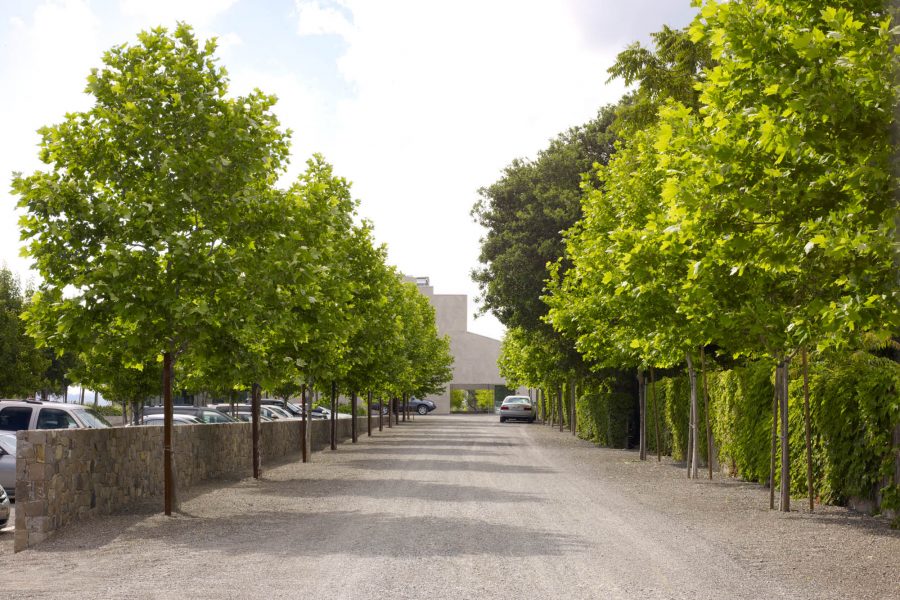

London plane trees shade the approach along an axial entry drive. Parking for fifty cars is partially screened from the drive by a four-foot-tall, 260-foot-long freestanding stone wall. The vine-covered west wall divides the property from a rail line that originally served the warehouse. A carpet of crushed roofing gravel unifies the design, covering most of the ground plane except for the agricultural areas.

As a protection against periodic flooding, the landscape around this building was conceived as a series of “piers” or plinths elevated above the sea of vineyards, each one defining a courtyard with a unique character and function.
These terraces extend out into the vineyards, serving as outdoor rooms for receptions and openings. The subdued, economical design responds to this program. These plinths are defined by a seat wall of precisely fitted native stone that creates a datum around the project.

Large chunks of rough, indigenous rock are piled against the crisply defined wall to create a textural juxtaposition that highlights the interface between the outdoor event and recreational spaces and the vineyard below. The elevated piers are visually connected to the interior spaces and create links that reinforce the spectacular views over the valley.
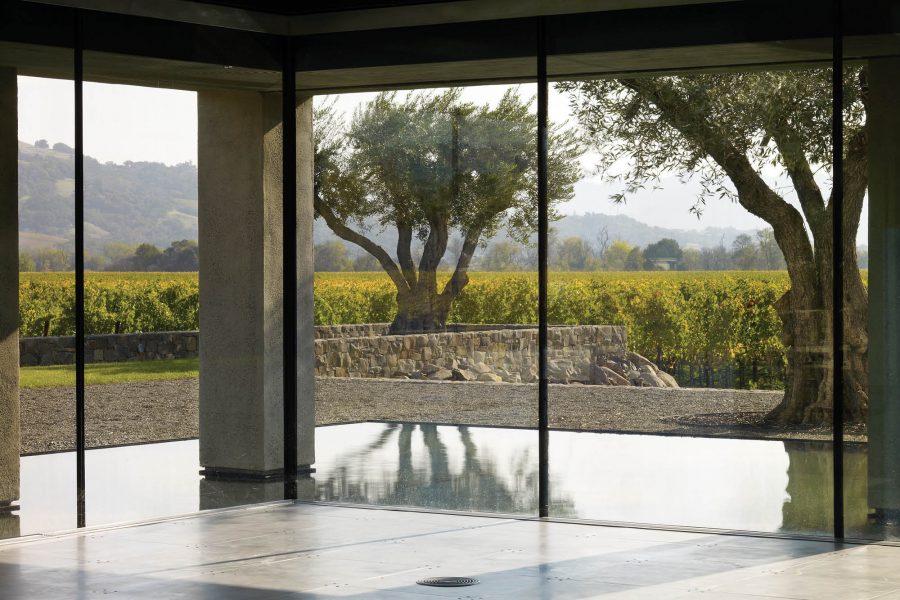
At the southeast corner of the building a nearly flush reflecting pool dissolves the border between indoors and outdoors, creating a feeling of a seamless plane connecting the interior aluminum flooring and the landscape beyond.
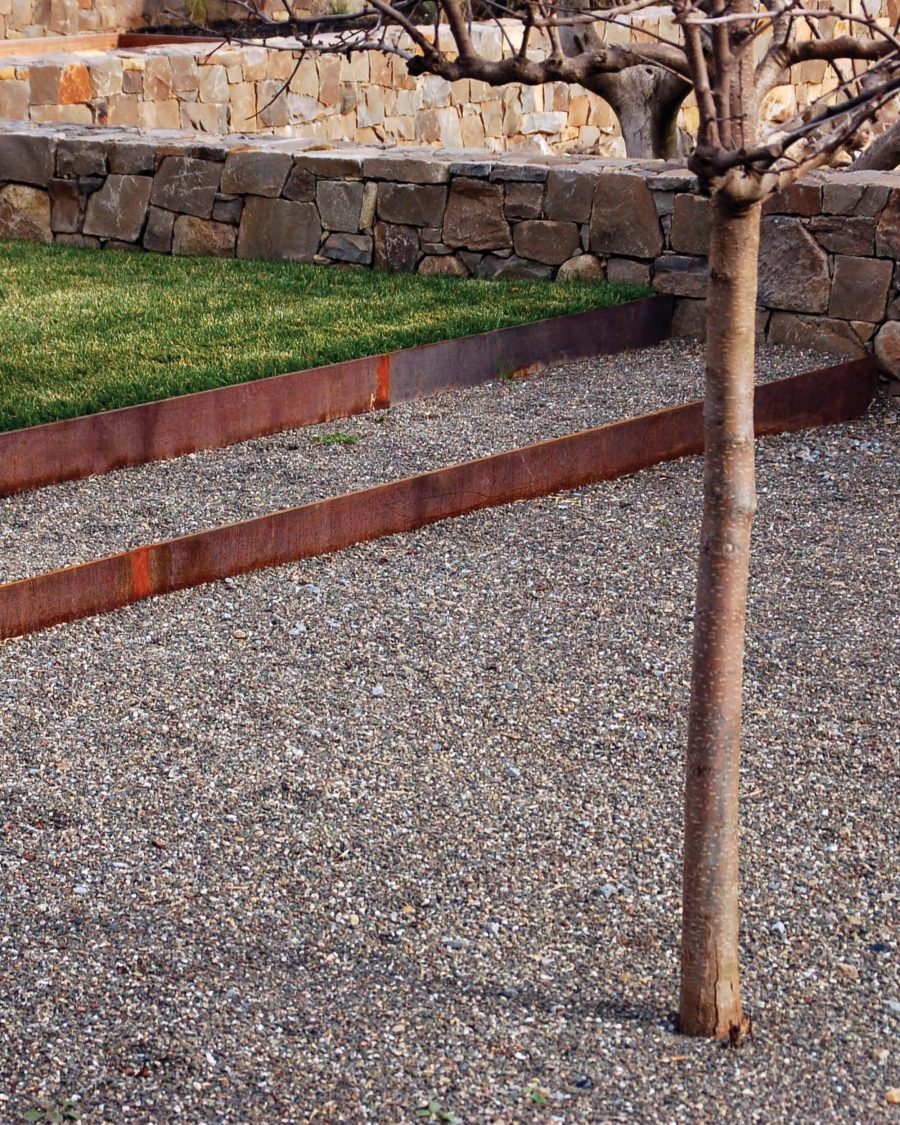

The exterior spaces are designed to provide great flexibility of use, allowing multiple events to take place simultaneously without compromising the interconnectedness of the overall design. The main gathering areas are therefore defined by subtle grade changes that imply the edges of the outdoor rooms.
“Andrea Cochran in Garden Design Magazine, March 2012It’s like peeling back the layers of an onion until you get to the essentials, then you add back in . . . You are trying to reduce it to its most essential qualities. How do we let light in; what’s going to happen over the seasons; will that be backlit?


While flexible in terms of function, each space is distinguished by unique, carefully designed features. A shaded courtyard of ‘Korean Sun’ pears is defined by the tree canopy above. An allée of fruitless mulberries recessed two steps below the building is accessed by a sculptural COR-TEN steel ramp that defines a main axis running from the interior. The area beneath these trees is designed to hold a long table for alfresco dining at arts-related events. A recessed bocce court is also set into one of the piers, its elevation defining that space. Other areas are shaped by a linear lawn area and a panel of native grasses.
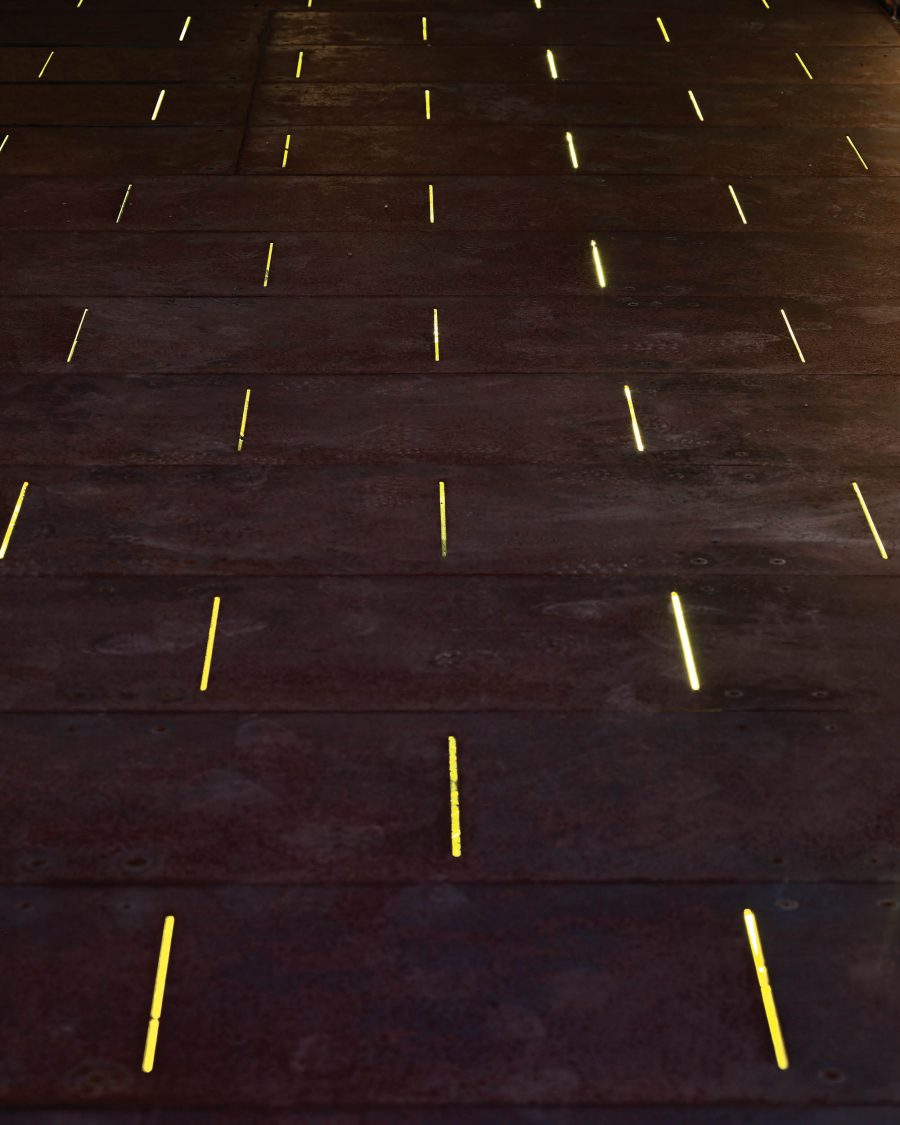
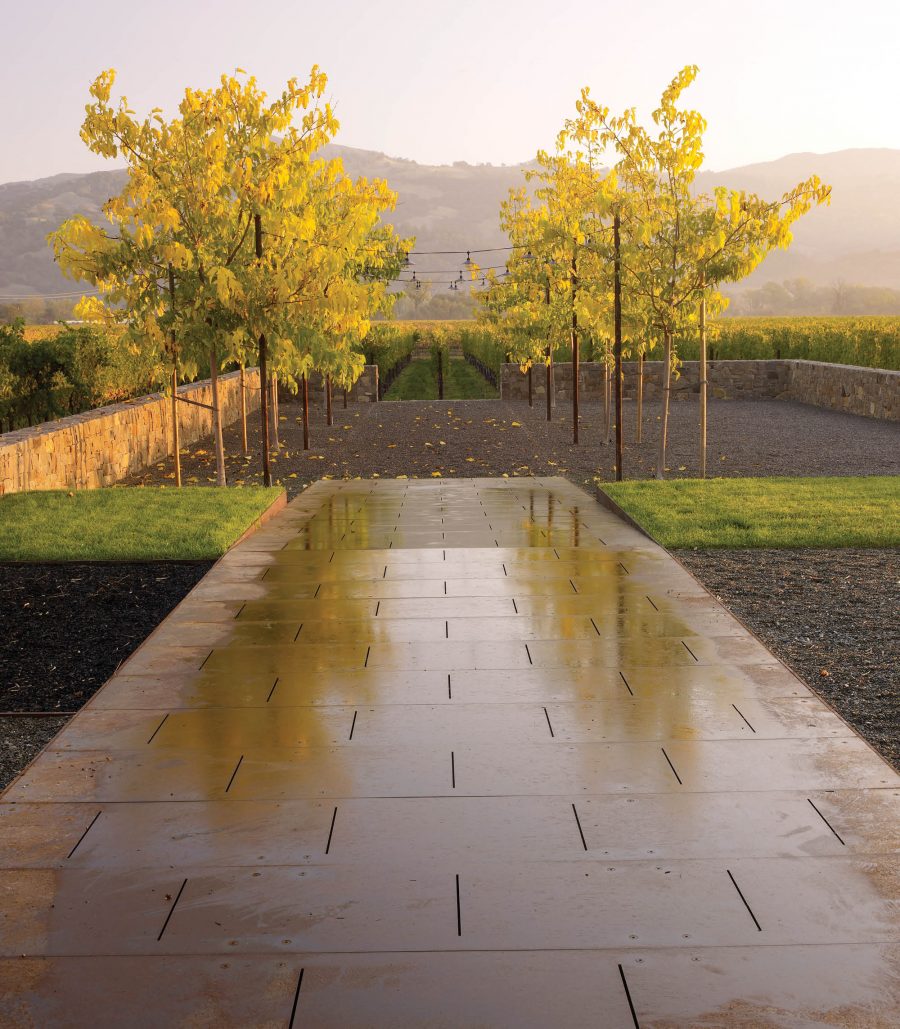
The landscape is designed to accommodate both night and daytime use. The subtle lighting respects the agricultural setting and helps to reduce light pollution in the rural skies. Lights are used sparingly to define spaces and provide safe passage around the site. The COR-TEN ramp is lit from below by narrow slits with hidden LED lights. The bocce ball court is also lit by bands of LEDs tucked under the cedar edging. Low voltage lights are hidden in four 100-year-old olives that subtly guide the visitor.
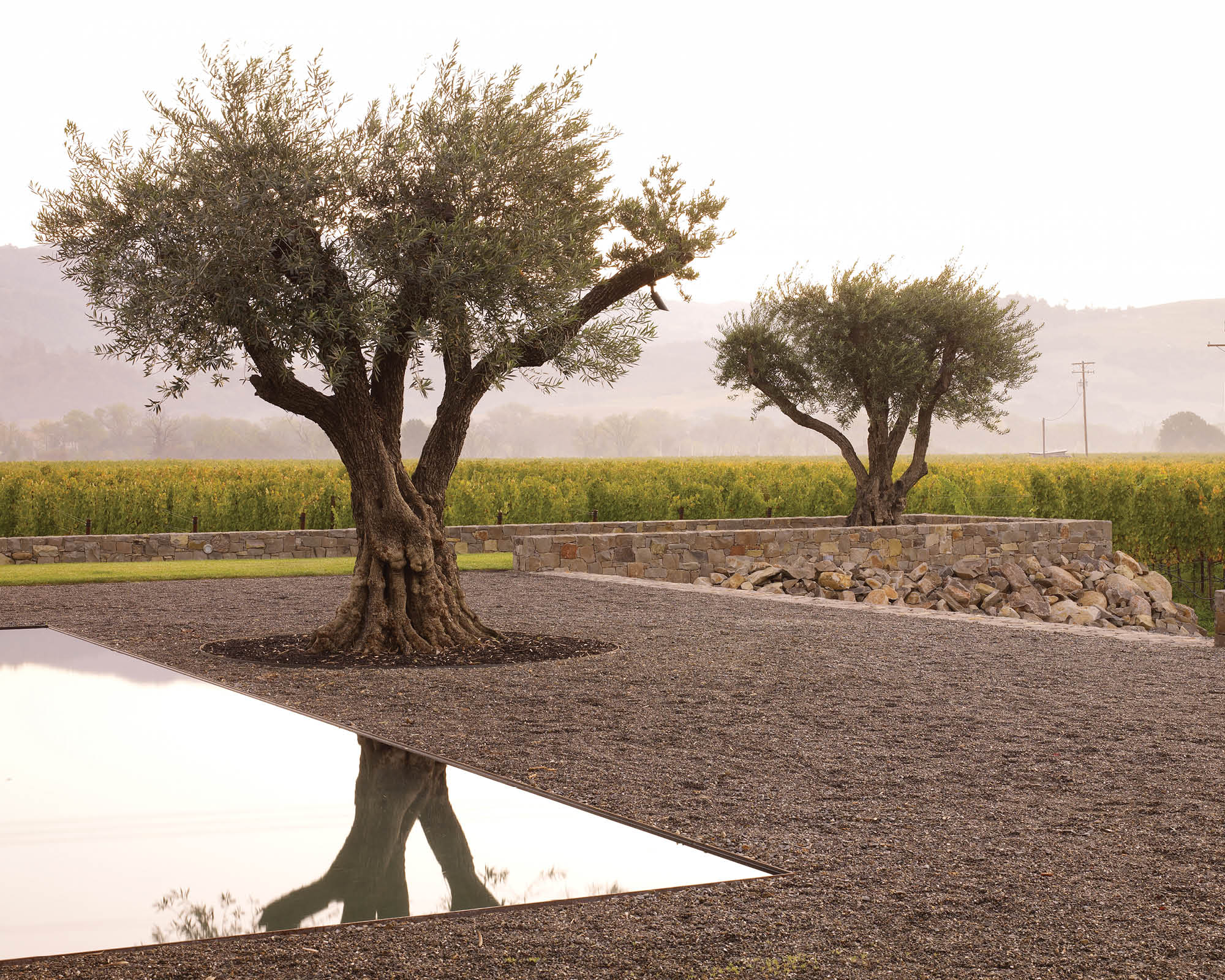
The planar landscape is articulated by the placement of the specimen olive trees, which act as points of punctuation, providing focal elements in the foreground of the immense landscape. Shaping large spaces from these few materials has resulted in a landscape that is both harmonious and celebratory of its surroundings.


